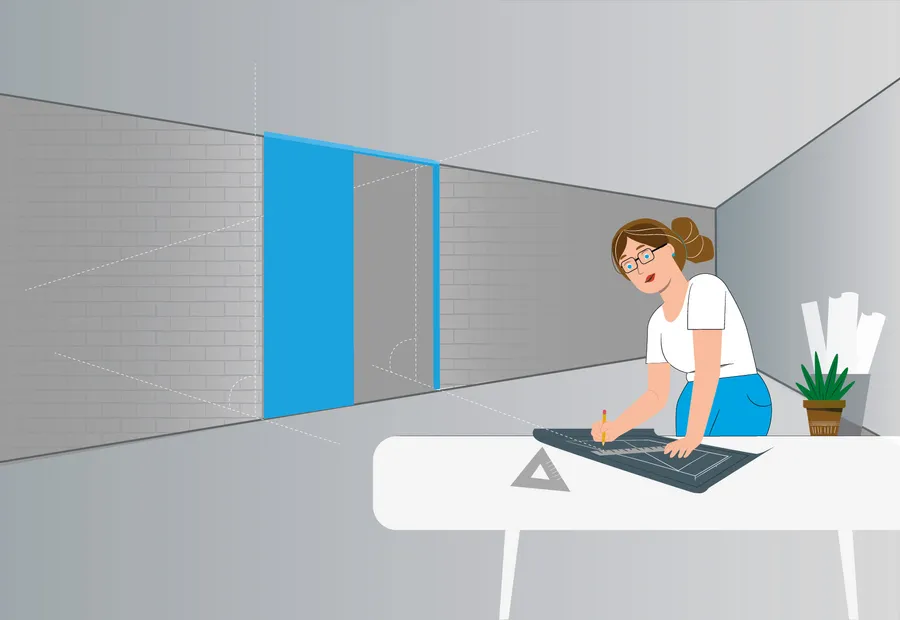Technical insights 09/01/2021
How to choose the dimensions of a sliding pocket door system
Here is a simple guide to choosing the size of a sliding pocket door system.
Over the years, we have witnessed a real revolution in the world of interior design: stylistic trends have changed, requirements have become more complex, and companies and designers have had to revise their range to adapt to this constant quest for customization. This radical change has also affected the sliding door sector. Many different types of sliding doors embedded in the wall have developed together with their respective pocket door systems: modern, elegant, functional and advantageous, with the precision of their passage opening and overall dimensions, they have stolen the scene from many other innovations in the world of interior design.
So what are the necessary steps to follow and what do you need to know to choose the right dimensions of the pocket door system and the door panel? Let us analyze it together.

Dimensions of the pocket door system: what you need to know
First of all, it is important to remember that it is possible to have a pocket door system either for plastered or plasterboard walls.
In order to do this, however, you must first make sure that it is not a load bearing wall of the house or that a flue pipe does not pass through it: in this case, a false wall made of plasterboard is usually built, allowing the box to be installed inside it. After verifying this important detail, important measures should be taken, such as:
- Overall dimension: dimension available or required for the installation of the pocket door system, i.e. total width: pocket size + passage opening + dimensions of vertical jamb and door jambs;
- Height: to be measured from the finished floor;
- Wall thickness: its depth. As you might guess, the wall on which the entire sliding system is installed should be slightly more than twice the width of the door.
Standard and non-standard dimensions
It is important to specify, however, that even if these measures are manually taken, there are still standard or minimum dimensions that must be respected in order to proceed with the installation. Therefore, it is recommended to ask for help from a qualified technician, or by consulting the Configurator tool on the Ermetika website, which is indispensable for choosing the most suitable product for your needs and in compliance with the correct applicable dimensions.
When talking about the dimensions of a sliding pocket door system, it is important to distinguish between standard and non-standard dimensions.
Thinking in terms of passage opening (i.e. the opening or passageway of sliding or swing doors, including jambs), by convention, STANDARD DIMENSIONS are:
- Boxes between 60 cm and 100 cm wide;
- Boxes between 200 cm and 210 cm high;
NON-STANDARD DIMENSIONS (width and height) while complying with the dimensional limits that ensure the functioning of the system, are bigger or smaller than the standard dimensions. In terms of wall thickness, a pocket door system can usually be installed on a plastered wall with:
- thickness of 107 / 125 mm for hinged doors (e.g. Absolute Swing model);
- thickness of 90 / 107 / 125 /145 mm for sliding doors (Evolution model);
- thickness of 170 mm for overlapping sliding doors (Staffetta model).
On a plasterboard wall with:
- thickness of 100 / 125 mm for hinged doors (Absolute Swing model);
- thickness of 100 / 125 / 145 mm for sliding doors (Evolution model);
- thickness of 180 mm for overlapping sliding doors (Staffetta model).
In order to avoid buying a product that is not suitable for the size of the walls of your home or that does not generally meet your needs, it is important to repeat once again that you should consult a qualified technician to confirm the feasibility of certain models with particular dimensions.
